Kia Telluride Vs Subaru Ascent Comparison

Going into this comparison, it almost didn’t seem fair.
It’s no secret that the Telluride has been a smash hit for Kia. The brand’s larger three-row has won awards right out of the gate, and folks are paying over list for used examples. The Telluride has immediately become one of the very best choices in the three-row crossover set.
The Subaru Ascent had its own time in the spotlight, roughly six months before the Telluride’s debut. A far cry from the maligned Tribeca before it, the Ascent leans into the modern Subaru values of pragmatic practicality and a learning curve as steep as playing Pong.
Get a Quote on a New Kia Telluride or Subaru AscentThere is no surprise underdog victory here: the Telluride remains the better overall pick. Nonetheless, the Ascent does some things better, specifically for those that want a no-fuss family hauler. Read on to find out which is best for your needs.
Interior and Cargo Space
Telluride: Cover the logo on the steering wheel, and it would be easy to convince friends that this was the interior of a pricey, premium German SUV. The Telluride interior is modern and mature, with a clean dashboard design that emphasizes its width. Climate and audio controls are centralized and easy to reach, like a modern BMW. Two sizeable grab handles flank the center console, a design flourish that mirrors Mercedes’ GLE. Tasteful wood and chrome trim finish the look. It’s a very front-heavy design, however; the door panels in the second row feature larger swathes of hollow black plastic. We wouldn’t say no to a splash more color either, but at least the pair of moonroofs let in a good amount of light. The Kia’s boxy shape gives it good sight lines, as well.
One curious issue with our tester: despite being quite new, its center console for the wireless charger and USB ports was already broken.
The front seats feature a wide range of adjustments which, along with the tilt-and-telescoping wheel, ensures drivers of all shapes and sizes can get comfortable. Comfort is high, and this penultimate-trim tester includes both heating and ventilation up front. That’s a huge boon during Toronto’s typical lousy Smarch weather, which can swing between sub-zero and shorts-appropriate all within 24 hours.
Managing editor Mike Schlee praises the Kia’s better third-row entry and exit seat mechanism. It’s simpler to use, and the opening is reasonably large. That said, the Telluride has the tighter third row, with a few inches less hip and shoulder room. Legroom stands at 31.4 inches (798 mm), while headroom is a generous 37.8 inches (960 mm). Mike also points out second-row seat anchors are tough to engage, since they’re sunk into the seat cushions.
Despite their very different sizes, the Telluride and Ascent offer up largely similar trunk space measurements. The Kia has the edge when running with all seats up, with a wide, flat 21.0 cubic feet (595 liters) of space. Two-row and one-row storage amounts are 47.5 cu-ft (1,345 L) and 86.5 cu-ft (2,449 L), respectively. Properly equipped, the Kia will tow up to 5,000 lb (2,268 kg).
Ascent: The Subaru’s interior is … fine. The wraparound design enhances the feeling of space up front, with a clear, HD view out ahead. It lacks the premium feel of the Kia, a fact highlighted by the various plastics all converging right around the central touchscreen. The carbon fiber-look trim is possibly the least-convincing of its kind, too. The Subaru’s spindly shifter feels like a carryover from the last century, as well. On the flip side, both of us prefer the Subaru’s conjoined moonroof, which floods the front two rows with natural light.
This new-for-2022 Ascent Onyx Edition features Subaru’s water-repelling StarTex seating material. Not quite convincing as a leather substitute, it nonetheless earns big points for it easy-clean nature. This is family transport, after all, and the Ascent has more cupholders than anything else in the class. The front seats are just as comfortable as the ones in the Telluride, with slightly more thigh bolstering to keep butts in the seats. Like the Kia, the Subaru includes front-row seat heating, but not ventilating. Subaru’s captain’s chair-equipped second row earns second-place, however, due to a shorter lower cushion and four inches less legroom.
The Ascent’s path to the way-back might not be as easy as the Telluride’s, but once folks are installed in the third row, it’s the better place to be. More width is key, plus better contouring. Legroom just pips the Telluride at 31.7 inches (805 mm). Adults might feel the headroom pinch however, as the Subaru gives up an inch and a half.
All-up, the Ascent scores a solid 17.8 cu-ft (504 L) of storage space. Fold the third row and it squeaks ahead of its Korean competition, with 47.5 cu-ft (1,345 L) for strollers, coolers, and whatever else you’ll need for a weekend trip away. Go into full house-reno-supply mode, and the Ascent rewards with 86.5 cubes (2,449 L).
SEE ALSO: Hyundai Tucson Hybrid vs Toyota RAV4 Hybrid Comparison: Fuel-Sipping Family HaulersBottom Line: The Ascent’s interior design and quality is typical Subaru: not especially nice, but durable and straightforward. It has the better third row (but worse access to it), ever so slightly better sightlines, and the winning moonroof design. Those wipe-clean seats are its biggest win, however. If spillage is less of a concern for you, the Kia’s near-premium cabin is the nicer place to spend time. It also features the more appealing second-row, and it will fit more stuff in back, if only slightly.
Tech and Features
Telluride: The Kia’s 10.25-inch infotainment system runs the brand’s UVO interface. The main menu looks cool with its neon sign-like color scheme, but the uniform look can make it hard to navigate on the move. The font is not the most legible, either. Props to Kia, however, for retaining physical buttons for both climate and audio. Apple CarPlay and Android Auto both hook up via wire, working flawlessly.
Kia loads up the Telluride with a whole bunch of useful tech right from the start, including tri-zone climate control, six USB ports, and full auto windows. Heated seats show up beyond the base model. They’re standard on all trims in Canada, along with the Harmon Kardon sound system and wireless phone charger. Both of the latter items are an advantage over the Subaru. Another perk: air-cooled front seats! Families will appreciate both Quiet Mode and Passenger Talk. The former limits audio to the front speakers only, and at a low volume. Meanwhile, Passenger Talk uses an in-cabin speaker to project the driver’s voice back.
Standard safety kit includes the usual smattering of automated emergency braking, lane keep assist, lane departure warning, full speed adaptive cruise control, blind-spot monitoring with rear cross-traffic alert, and auto high beams. Kia also adds a driver attention alert, rear occupant alert, and safe exit assist. A 360-degree camera makes it a cinch to park in tight spots, too. Best of all is the Blind View Monitor, which feeds a live camera view into the instrument panel whenever a turn signal is active.
Ascent: Subaru’s 8.0-inch infotainment has a certain ease-of-use, thanks to its big, tile-based layout. It’s neither pretty nor quick, however. There’s also somewhat of a learning curve handling it, the small screen above, and the one between the dials. It’s information overload at first, but folks who want the nitty-gritty will appreciate it all. Both vehicles allow for Apple CarPlay and Android Auto connections via wire, though the Subaru eschews a wireless charger.
Like the Telluride, the Subaru features tri-zone climate control across the board. Heated seats and steering wheel are here too, but you’d need to plump for the top trim to earn ventilation, or the next trim up from Onyx for heat in the second row. Subaru offers its own Harman Kardon system in higher trims, and it packs in an additional four speakers over the Kia’s, for a total of 14.
Oh, and there’s a CD player.
Subaru’s EyeSight suite of driver assists is standard fitment on all Ascents. It includes the typical adaptive cruise control, lane assists, auto high beams, and automated emergency braking. Blind spot monitoring and rear cross-traffic alert are present too, though the Subaru’s excellent sight lines make them more a welcome extra set of eyes than anything approaching a necessity. It lacks the 360-degree camera, however. I find Subaru’s lane departure warning too eager to sound off, as well.
SEE ALSO: 2020 Ford Escape Hybrid vs 2020 Toyota RAV4 HybridBottom Line: As expected given their respective price tags, the Kia is kitted out with more goodies than the Subaru. Whether it’s comfort, convenience, or safety, the Telluride outpoints the Ascent here.
Powertrain, Driving Feel, and Fuel Economy
Telluride: Every Telluride comes with a 3.8-liter V6, producing 291 horsepower and 262 pound-feet of torque. If the Telluride has a weak point—and we’re talking comparatively here—it’s the six-pot. It makes a good noise, one Schlee prefers, but it’s only fine in terms of pep. Torque doesn’t peak until a high 5,200 rpm, and that translates to prolonged prods of the throttle to really unlock all the juice. The eight-speed auto is smart, smoothly shuffling ratios to keep revs low on a cruise, or holding onto a gear when full power is needed. While front-drive is standard (in the US), this model is AWD (standard in Canada).
Fuel economy isn’t great, either. The EPA rates the AWD Telluride at 19 mpg city and 24 mpg highway, for a combined 21 mpg score. Canadian equivalents are 12.7, 9.7, and 11.3 L/100 km, respectively. During the week, the Telluride scored 19.6 mpg (12.0 L/100 km).
“Kia feels more buttoned down. Suspension feels more refined,” read Schlee’s notes, and I agree. It’s far from a stiff experience, but the Telluride does have a more controlled ride with less body roll. Its steering has more weight to it as well, though neither rig’s rim is brimming with feedback. Telluride pilots will experience slightly less wind noise, as well.
Ascent: Like the Telluride, the Ascent offers just one engine. It’s a 2.4-liter boxer-four, with 260 hp and 277 lb-ft to its name. Don’t let the numbers fool you: what it lacks in ponies, the Ascent more than makes up for with a thick slug of torque, peaking at 2,000 rpm and lasting right through to 4,800 rpm. Hooked up to a continuously variable transmission (CVT) and sending the power through all four contact patches, the Ascent is the more muscular of these two. It gets up to speed effortlessly, not requiring drivers to hold a gear to extract best performance.
Subaru has clearly tuned the Ascent for comfort. There’s nothing wrong with that—it’s a three-row crossover, after all—but that does lead to it leaning more through corners. On the move, it flattens out potholes and floats over rough surfaces. There’s a little more tire and wind noise heard within the Subaru cabin, however.
The Ascent enjoys a slight fuel economy advantage over its Korean competitor. Top trims including the Onyx are rated at 20 mpg city, 26 mpg highway, and 22 mpg combined. Canadian numbers are 11.7, 9.0, and 10.5 L/100 km, respectively. Sure enough the Ascent maintained that advantage over the week, posting an average of around 21.4 mpg (11.0 L/100 km).
Bottom Line: This is where the Subaru begins to claw ground back. Some folks might decry the CVT, but it pairs well with the turbo-boxer to do exactly what is asked of it: seamless, smooth progress in cities and on highways. It’s noisy when revved up, but that’s the thing: it doesn’t need to do so as often. The Subaru’s softer suspension setup should please those who aren’t behind the wheel, too. That it’s also better on fuel makes the Subaru the pick here.
Styling
Telluride: For whatever reason, I’ve not seen a Telluride in white until this tester. It highlights some of the smaller design features that are otherwise drowned out in the more typical dark green or black. The chamfer in the lower door, for instance, or the slight crease running between the taillights. It’s a good-looking rig, substantial without looking overweight. Such is the speed of Kia’s design evolution that it’s looking a little out-of-place within the lineup already, but next week’s 2023 Telluride reveal should bring it in line with the family.
There’s a tasteful amount of chrome, lining the front hood and bumper intakes, with a small fin at the base of the B-pillar too. A strip running along the side cladding also visually anchors the car. We like the 10-spoke wheels, with a
Ascent: The Ascent is what happens when you order your Subaru in Extra Large. All the familiar Forester and Outback DNA is here, just reprinted at 120-percent scale. In black-on-black-on-black Onyx Edition form, it’s very hard to distinguish the Ascent from any other Scooby, until you’re close and realize just how big it is. Subaru must still be smarting from the criticism of the B9 Tribeca, because the Ascent overcorrects, replacing that car’s weird with anonymous. Neither of us are fans of the black-out treatment either, since it removes what little detailing and contrast there usually is. Can we leave this trend in the 2010s?
Bottom Line: Looks are always subjective. The Ascent is the more conservative option, and non-Onyx models add in some necessary visual contrast. The Kia is a little more playful, but is more likely to divide opinion. The choice is yours.
SEE ALSO: Toyota RAV4 vs Nissan Rogue ComparisonPricing and Value
Telluride: The Telluride trim walk starts with the LX in America, priced from $34,345 including destination. That does not include AWD however, which requires an additional two grand. That’s true on every trim, including the S ($36,845), EX ($39,345), and SX ($44,245). There are a handful of packages depending on trim, and checking every available box on the top SX nets buyers a car just a smidge over $50,000.
In Canada, the lineup includes AWD as standard, and begins at EX, explaining the $48,890 CAD starting sticker. This tester is badged SX ($53,390 CAD), though there are a handful of trim differences between it and its US sibling; most notably, the eight-passenger seating here. The only additional charge is the $250 CAD for the paint. Load everything onto a Telluride Nightsky Edition and you’re looking at $58,595 CAD.
Ascent: The Ascent trim walk is more or less the same in both Canada and the US, though beyond the Onyx and Limited, the names are all mixed up. South of the border, it’s plain Ascent, then Premium, Onyx, Limited, and Touring. The base model goes for $33,470 including destination, and the top trim $46,620. It’s important to note that AWD is standard across the range, as it is on every four-door Subaru. The Onyx begins at a very reasonable $39,170, with the only option being the $2,200 panoramic moonroof and navigation package.
In Canada, the lineup goes Convenience, Touring, Onyx, Limited and Premier. The line starts at $39,170 CAD, and tops out at $53,670. This mid-level Onyx is $46,870 CAD; the moonroof is part of that price in the Great White North, but the nav isn’t available.
Bottom Line: Across the board, the Subaru undercuts the Kia. As-tested, it’s a few thousand easier on the wallet, though to be fair, the Ascent feels it. Nonetheless, saving money is typically a pretty important priority for families, and the Ascent is one of the most affordable ways into a three-row you can buy new.
SEE ALSO: Kia Sorento vs Honda Pilot Comparison: Three-Row ThrowdownVerdict: Kia Telluride vs Subaru Ascent Comparison
Like we said from the start, the Kia Telluride is the overall winner. The Korean company has done its homework, crafting a three-row that feels robust, premium, and spacious. The Telluride has no major weak points—no wonder it remains in high demand.
The Ascent isn’t without its charms, and pitting it against the segment leader highlighted them. Its interior feels more budget, but its also more spacious, and family folks will be all too happy Subaru fit that easy-clean seat material. The Ascent has the better powertrain, too. Yes, the CVT.
If you regularly cart around multiple, younger kids and their accompanying things, the Subaru’s straightforward approach and value proposition are hard to deny. Less likely to fill every seat, and maybe the kids are older? The Kia is the easy pick.
Become an AutoGuide insider. Get the latest from the automotive world first by subscribing to our newsletter here.

Kyle began his automotive obsession before he even started school, courtesy of a remote control Porsche and various LEGO sets. He later studied advertising and graphic design at Humber College, which led him to writing about cars (both real and digital). He is now a proud member of the Automobile Journalists Association of Canada (AJAC), where he was the Journalist of the Year runner-up for 2021.
More by Kyle Patrick



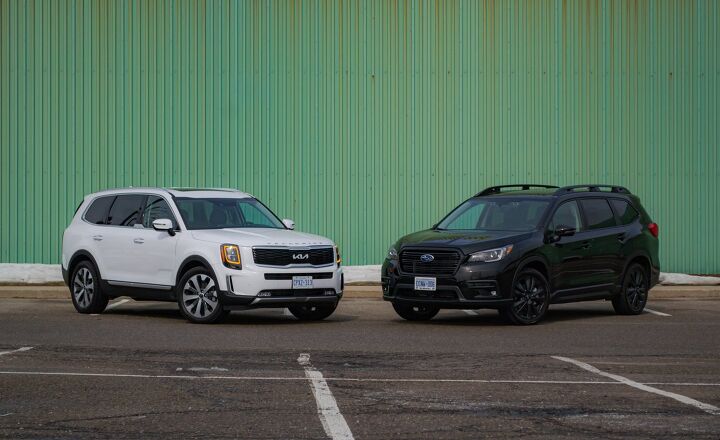
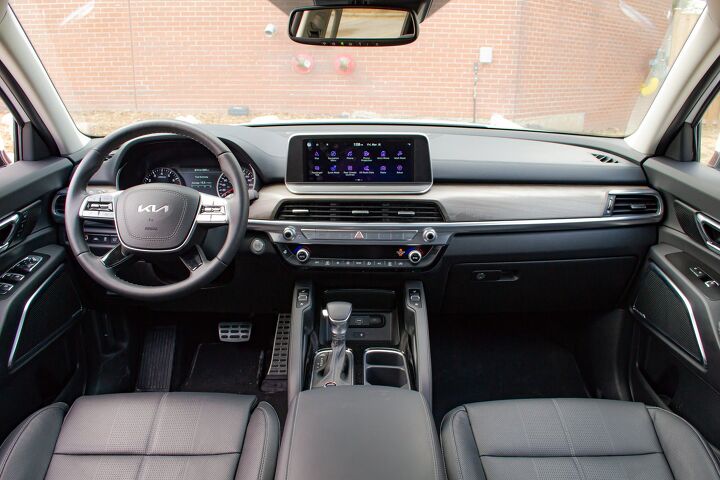

































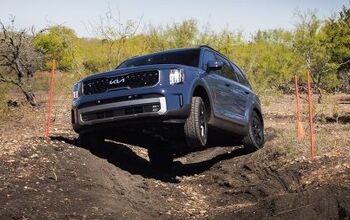
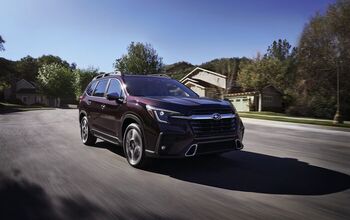
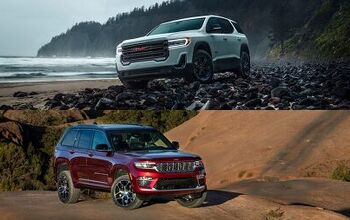


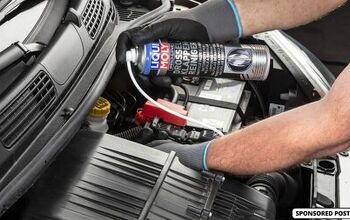
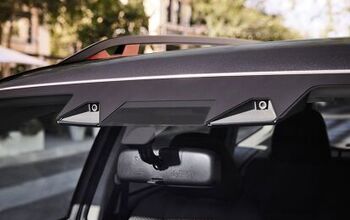


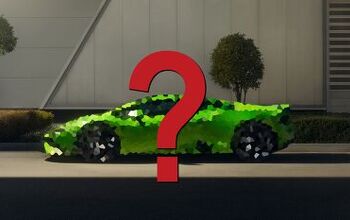
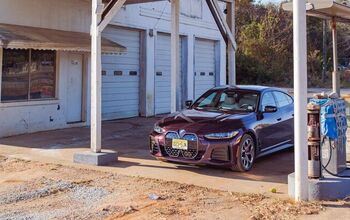


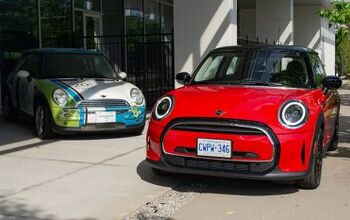

Comments
Join the conversation
Easy pick. Until warranty is to up, who has more problems down the road.